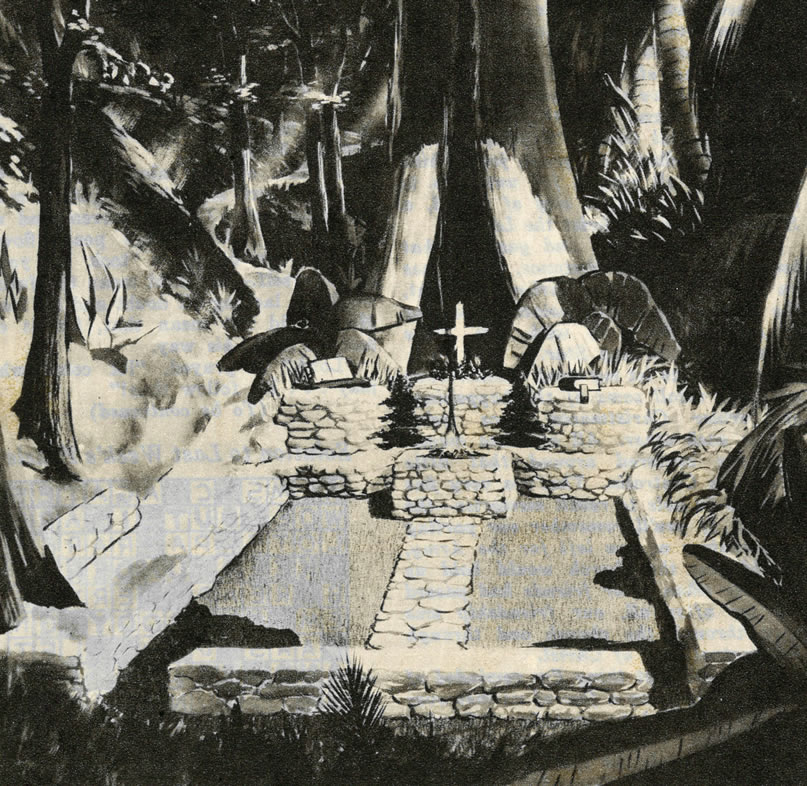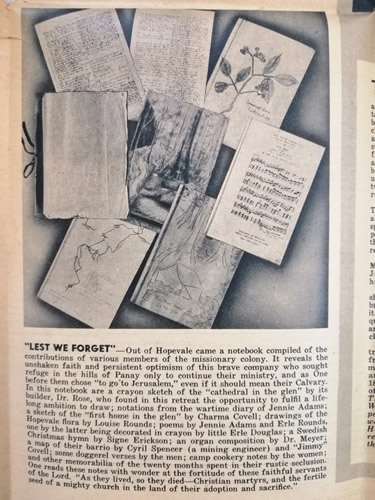By Francis Neil G. Jalando-on

In the Cathedral in the Glen, our missionaries devoted their study of faith, flora and fauna.
How do we learn lessons? For most of us, we read books and study in schools like Central Philippine University, a school which ranked #18 in the country and #1 in Western Visayas with two CHED Centers of Excellence and four CHED Centers of Development.
While the American Baptist missionaries were in Hopevale, they read books to continue their learnings. After they were executed on December 20, 1943, one of the things that were recovered were their books. The list included novels such as the classic Count of Monte Cristo by Alexander Dumas and books on insight such as Prayers of the Social Awakening by a prominent figure in the Social Gospel movement, Walter Rauschenbusch. There were also those containing stories and poems. The topics varied from Christianity and religion to history, economics, biography, the sciences, as well as technology. All in all, there were 100 books about multiple topics that they read, and were later recovered.

Amidst the war, the American Baptist missionaries were able to write poems, compose songs and draw portraits inspired by their refuge in Hopevale.
Aside from reading books, they also observed their surroundings and learned from it. One of the Hopevale Martyrs, Jennie Claire Adams, a missionary nurse who was assigned to work in the Capiz Emmanuel Hospital, made a poem about a “Forest School.” She gave this poem to the three American children who were in Hopevale on February 1943. These three boys, Erle Douglas (son of American missionaries Mr. Erle Frederick Rounds and Mrs. Louise Cummings Rounds), Johnny and Terry (sons of Mr. Mark Walsh Clardy and Mrs. Fern Clardy, Americans who sought refuge with the missionaries) were bayoneted to death on December 20, 1943. Their young lives ended tragically, and they never got the chance to study at Central Philippine College again.
Here is the poem that describes the rich lessons that these three boys learned in a “Forest School”:
“Have you watched a butterfly in the rain
Or heard a tree frog’s glad refrain?
Have you waded in the brook on a sunny day
And gathered snails along the way?
Have you chased a lizard away from the chicks
Or watched the monkeys’ funny tricks?
Have you watched them scamper for berries and fruit?
Did you think their antics clever and cute?
The baby clinging so tight to its mother
The others chattering and chasing each other.
Have you dug in a hole for a crab or two
Or watched to see what a tagpo could do?
Can you tell a boyud from a centipede
Or budjapa leaves from a common weed?
Have you seen an orchid or a wild fig tree?
Can you name one half of the things you see?
How many bird names can you tell?
Have you found a cicada’s empty shell?
Have you hunted shoots from the bamboo clumps
Or gathered mushrooms from banana stumps?
Have the orchid blossoms dropped at your feet
Or the Doña Aurora flowers sweet?
Have you watched a mother bird or her nest?
Have you heard the darawidaw sing
Or watched a blackbird on the wing?
Have you noticed the way a hawk will fly
Like a diving plane against the sky?
Have you seen a wild pig or a deer
Or watched the hunters with net and spear?
If you have not learned these lessons sweet
Your education is not complete.
Let’s wander into the forest shade
Where a little hut of grass is made.
We will sit on a log or a bamboo stool
And learn many things in the forest school.
There are many things we ought to know
That in a forest live and grow.”
